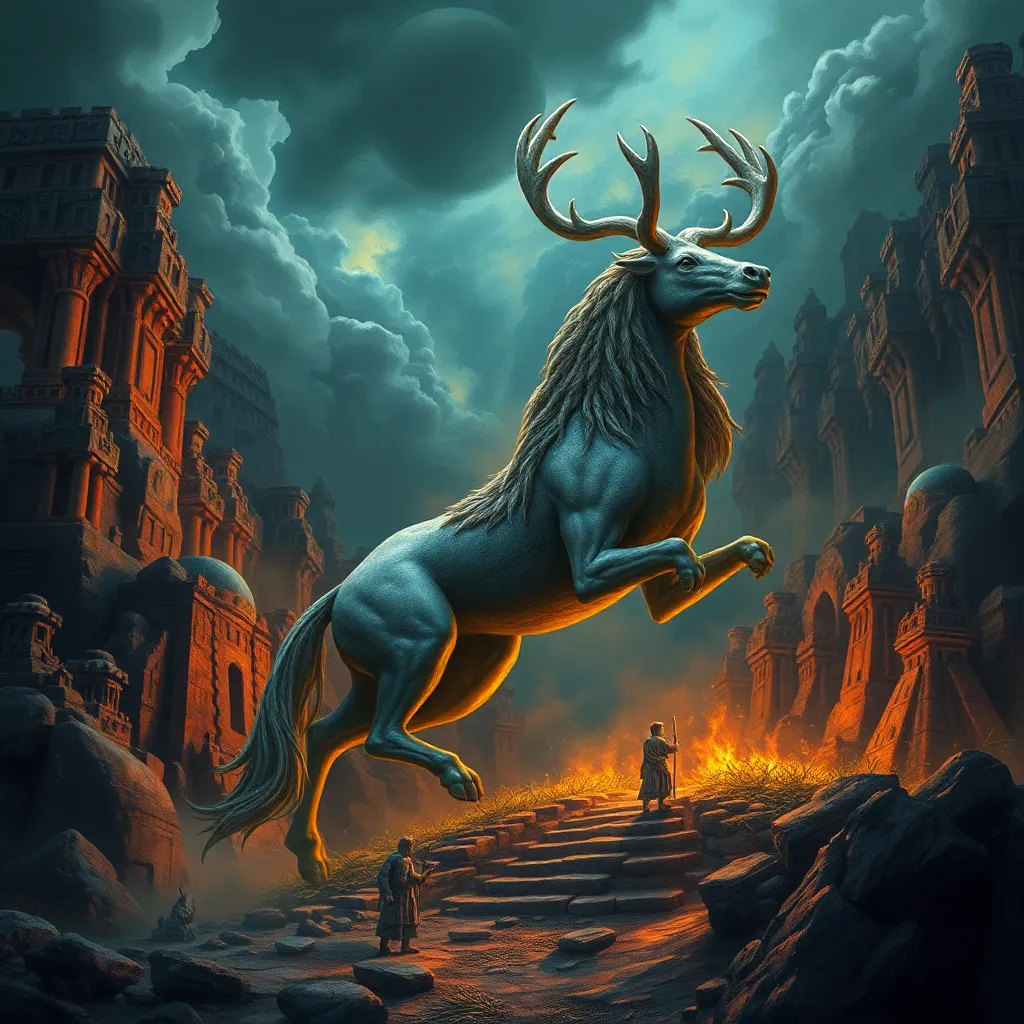The Sacred Larch: Myths of Transformation and Renewal
Introduction to the Sacred Larch
The larch tree, a fascinating conifer, holds a unique place in the tapestry of nature and culture. Known for its remarkable ability to shed its needles in winter while still being classified as a conifer, the larch embodies duality. This dual nature resonates deeply across various cultures, symbolizing both resilience and transformation. In many traditions, the larch is revered not only for its beauty but also for its spiritual significance, making it a sacred element in the natural world.
Historical Significance of the Larch in Indigenous Cultures
Indigenous cultures have long recognized the importance of the larch in their lives. For many Native American tribes, the larch tree is a vital resource, providing materials for shelter, tools, and even medicine. The wood of the larch is known for its durability, making it an ideal choice for constructing canoes and homes.
- Native American Tribes: The larch has played a role in various rituals, symbolizing life cycles and connection to the earth.
- Folklore: In other indigenous communities, the larch is often featured in legends that speak of creation, transformation, and the interconnectedness of life.
Symbolism of the Larch: Transformation and Renewal
The larch serves as a powerful symbol of resilience and adaptability. Unlike other trees that remain evergreen, the larch undergoes a dramatic transformation each year. In the fall, it sheds its needles, representing the natural cycle of death and rebirth. This seasonal change not only signifies the end of one phase but also the promise of renewal in spring.
In many cultures, this transformation is viewed as a metaphor for personal growth and change. Just as the larch adapts to its environment, individuals are encouraged to embrace their own transformations.
Larch in Mythology: Tales of Change
Throughout history, the larch has been woven into various myths that emphasize the themes of change and transformation. One notable myth tells the story of a larch tree that stood at the crossroads of two worlds, guiding lost souls through their journeys of self-discovery and renewal.
- Interpretation: These myths often highlight the significance of transformation, illustrating how challenges can lead to growth and enlightenment.
- Lessons: The tales serve as reminders that change is an essential part of life, encouraging individuals to embrace their journeys.
The Larch as a Healing Tree
The larch is not only a symbol of renewal but also a source of healing in various cultures. Traditional medicinal practices have utilized parts of the larch tree for their health benefits. The bark, wood, and even the resin have been used in remedies to treat ailments ranging from respiratory issues to skin conditions.
- Physical Healing: The larch is known for its anti-inflammatory properties and has been used in poultices and teas.
- Spiritual Renewal: Many cultures believe that spending time with the larch can promote emotional healing, helping individuals to reconnect with their inner selves.
Larch and Spiritual Practices
In various spiritual traditions, the larch holds a special place in rituals and ceremonies. Its wood is often used to create sacred tools, such as staffs and prayer beads, believed to carry the essence of transformation and renewal.
- Rituals: Many communities incorporate the larch into ceremonies that honor the changing seasons and the cycles of life.
- Crafting Spiritual Tools: The larch’s wood is valued for its strength and beauty, making it a popular choice for creating items that assist in meditation and spiritual practice.
Contemporary Interpretations of Larch Myths
In modern culture, the symbolism of the larch continues to inspire artists, writers, and environmentalists. The themes of transformation and renewal resonate strongly in today’s discussions about sustainability and the environment.
- Art and Literature: Many contemporary works incorporate larch symbolism, exploring themes of growth, change, and environmental stewardship.
- Environmentalism: The larch serves as a reminder of the importance of preserving our natural world and the lessons it offers about resilience and adaptability.
Conservation and the Future of the Sacred Larch
Despite its significance, the larch faces numerous threats, including climate change, habitat loss, and pests. These challenges put pressure on larch populations and their ecosystems, making conservation efforts critical.
- Current Threats: Deforestation, invasive species, and climate fluctuations are jeopardizing larch habitats.
- Conservation Efforts: Various organizations and communities are working to protect larch ecosystems through sustainable practices and reforestation projects.
Personal Reflections: Engaging with the Sacred Larch
Individuals can cultivate a deeper connection with the larch and its symbolism in their own lives. Engaging with nature and fostering an appreciation for the larch can enhance personal growth and transformation.
- Nature Walks: Spend time in larch forests, observing their beauty and reflecting on the lessons they embody.
- Artistic Expression: Create art inspired by the larch, capturing its essence through painting, writing, or photography.
- Journaling: Reflect on personal transformations and changes in your life, drawing parallels to the seasonal cycles of the larch.
Conclusion: The Enduring Legacy of the Sacred Larch
The larch tree stands as a powerful symbol of transformation and renewal, deeply rooted in the myths and traditions of cultures around the world. Its dual nature reminds us of the beauty of change and the importance of resilience. As we move forward, it is essential to appreciate and preserve the sacredness of the larch, ensuring that future generations can continue to draw inspiration from this remarkable tree.



